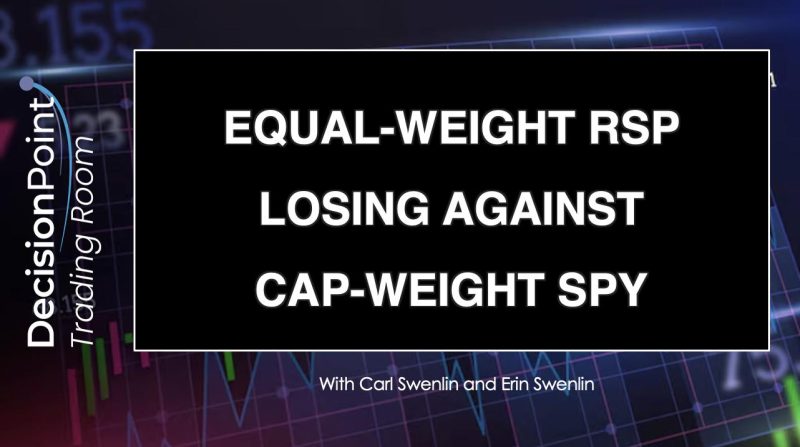In the world of finance and investing, one of the most important considerations for traders is how to construct their portfolios effectively. The debate between equal-weight and cap-weight strategies has been a persistent one, each with its own set of proponents and critics. The DP Trading Room’s analysis comparing the performance of these two approaches sheds light on the ongoing discussion.
Equal-weighting involves allocating the same amount of capital to each stock in a portfolio, regardless of its market capitalization. This methodology aims to provide more balanced exposure across all components of an index, thereby potentially reducing concentration risk. On the other hand, cap-weighting, the more traditional approach, allocates capital based on the market capitalization of each stock, giving higher weights to larger companies.
The comparison conducted by the DP Trading Room found that the equal-weight strategy has been losing against the cap-weight strategy when applied to the SPY ETF. This may come as a surprise to some investors who have favored the equal-weight approach for its diversification benefits. However, the analysis highlights the importance of considering various factors beyond just diversification when constructing a portfolio.
One key factor to consider is the impact of market-cap biases in different market conditions. In a market environment where larger companies are outperforming, a cap-weighted strategy would naturally benefit from the higher weights assigned to these companies. Conversely, during periods when smaller companies are leading the market, an equal-weight approach could potentially outperform due to its more balanced exposure.
Another aspect to consider is the rebalancing frequency of each strategy. Equal-weight portfolios require more frequent rebalancing to maintain the desired allocations, which may incur higher transaction costs and potentially impact performance. Cap-weighted indices, on the other hand, naturally adjust their allocations based on market movements without the need for frequent rebalancing.
It is essential for investors to understand the trade-offs associated with each strategy and consider their investment goals, risk tolerance, and market outlook when deciding on the most suitable approach. While the DP Trading Room’s analysis focuses on the SPY ETF, the findings can offer valuable insights for investors looking to optimize their portfolios across various market environments.
In conclusion, the debate between equal-weight and cap-weight strategies continues to be a relevant topic in the world of investing. Both approaches have their strengths and weaknesses, and the choice between them should be made based on a thorough understanding of one’s investment objectives and market conditions. The DP Trading Room’s analysis serves as a reminder of the complexities involved in portfolio construction and the importance of staying informed and adaptable in the ever-evolving financial landscape.




























